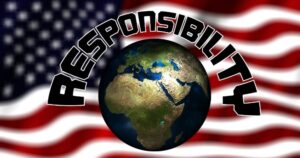Biblical Definition of Personal Responsibility
Personal responsibility is also called individual responsibility. It is the belief that human beings can choose and control their own actions and destiny. Today, society holds an individual responsible for the outcome of their personal actions. Taking responsibility for oneself is part of growing up. At birth we have no personal responsibility whatsoever. Everything that we need is done for us. The difference between a child and an adult is that there is a willingness and a capacity to take personal responsibility for our actions as we grow up.
(1 Corinthians 13:11)1NIV New International Version Translations – “When I was a child, I talked like a child, I thought like a child, I reasoned like a child. When I became a man, I put the ways of childhood behind me.”
The Bible teaches that personal responsibility also brings consequences. Each person is held accountable for their own decisions and actions.
(Ezekiel 18:20) – “The one who sins is the one who will die. The child will not share the guilt of the parent, nor will the parent share the guilt of the child. The righteousness of the righteous will be credited to them, and the wickedness of the wicked will be charged against them.”
The Old Testament attached blessings to obedience and penalties for disobedience. God’s Law emphasized the responsibility of individuals. People were to respond in appropriate ways to God’s revealed Truth. God defined right and wrong. God’s people were expected to do what was right. The Bible expects us to take personal responsibility in all areas of life. While we are no longer under the law of Moses as a rule of life (Galatians 3:25), we have a new law, the law of Christ. This law requires that each person be conformed to the image of Christ. This new law is also called the law of the Spirit (Galatians 5:16-18). By walking in the Spirit, which means obeying the Spirit and yielding to Him, we are taking personal responsibility for how we live our life.
(1 Timothy 5:8) – “Anyone who does not provide for their relatives, and especially for their own household, has denied the faith and is worse than an unbeliever.”
Each one of us has the personal responsibility for our own salvation. We also have the responsibility to make sure that our good works glorify God. No one can evade their personal responsibility to exercise faith in Christ (Galatians 6:5). Those who choose to reject the truth of God “are without excuse” (Romans 1:20).
(Mark 1:15) – “The time has come,” he said. “The kingdom of God has come near. Repent and believe the good news!”
(Ephesians 2:10) – “For we are God’s handiwork, created in Christ Jesus to do good works, which God prepared in advance for us to do.”
Many start a journey of faith because of something missing in their life that only Jesus can give them. They need help, hope, healing, or joy in their life. The choice that must be made is to bring oneself into the right relationship with God. Why did Jesus come to earth? Why did He die on the cross? He came and did all that to bring YOU into a relationship with God the Father.
(2 Corinthians 5:10) – “For we must all appear before the judgment seat of Christ, so that each of us may receive what is due us for the things done while in the body, whether good or bad.”
(2 Corinthians 5:19) – “that God was reconciling the world to himself in Christ, not counting people’s sins against them. And he has committed to us the message of reconciliation.”
Personal responsibility is a choice. It is your choice, to choose how you will live in this world. It is your choice to also decide which world you will live in later!
Example of Biblical Personal Responsibility
God clearly defined right and wrong, and His people were expected to do what was right! This has been the case ever since the Garden of Eden when Adam was given a specific command and expected to obey it. Later, Adam’s son Cain was warned by God that he would be held personally responsible for his actions (Genesis 4:7). There are many other examples. Achan was held responsible for his sin at Jericho (Joshua 7:14–15). Jonah was held responsible for his choice to run from the Lord (Jonah 1:7–8). The Levites were held responsible for the care of the tabernacle (Numbers 18:5). The deacons of the early church took personal responsibility for meeting some practical needs of the church (Acts 6:3). Paul was given the responsibility to blaze a gospel trail to the Gentiles (Ephesians 3:2). For this study, however, we are going to look at the Parable of the Good Samaritan.
(Luke 10:25-37) – On one occasion an expert in the law stood up to test Jesus. “Teacher,” he asked, “what must I do to inherit eternal life?” “What is written in the Law?” he replied. “How do you read it?” He answered, “‘Love the Lord your God with all your heart and with all your soul and with all your strength and with all your mind’; and ‘Love your neighbor as yourself.’” “You have answered correctly,” Jesus replied. “Do this and you will live.” But he wanted to justify himself, so he asked Jesus, “And who is my neighbor?” In reply Jesus said: “A man was going down from Jerusalem to Jericho, when he was attacked by robbers. They stripped him of his clothes, beat him and went away, leaving him half dead. A priest happened to be going down the same road, and when he saw the man, he passed by on the other side. So too, a Levite, when he came to the place and saw him, passed by on the other side. But a Samaritan, as he traveled, came where the man was; and when he saw him, he took pity on him. He went to him and bandaged his wounds, pouring on oil and wine. Then he put the man on his own donkey, brought him to an inn and took care of him. The next day he took out two denarii and gave them to the innkeeper. ‘Look after him,’ he said, ‘and when I return, I will reimburse you for any extra expense you may have.’ “Which of these three do you think was a neighbor to the man who fell into the hands of robbers?” The expert in the law replied, “The one who had mercy on him.” Jesus told him, “Go and do likewise.”
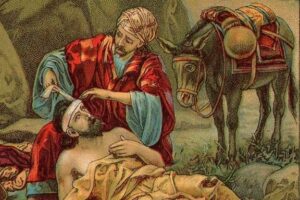 The story is told in Luke 10:29–37: A man going from Jerusalem to Jericho is attacked by robbers who strip him and beat him. A priest and a Levite pass by without helping the man. But a Samaritan stops and cares for him, taking him to an inn where the Samaritan pays for his care. To understand this parable, first one must understand who the Samaritans were. So who were the Samaritans, really? They were the despised enemies of the Jews. Through intermarriage, the Samaritans were neither Jew nor Gentile.
The story is told in Luke 10:29–37: A man going from Jerusalem to Jericho is attacked by robbers who strip him and beat him. A priest and a Levite pass by without helping the man. But a Samaritan stops and cares for him, taking him to an inn where the Samaritan pays for his care. To understand this parable, first one must understand who the Samaritans were. So who were the Samaritans, really? They were the despised enemies of the Jews. Through intermarriage, the Samaritans were neither Jew nor Gentile.
In 2 Chronicles 28, we can see how the prophet Oded had convinced the Samaritans years before to aid their Jewish captives during an earlier time. Oded insists that enemies can prove to be neighbors, that compassion has no boundaries, and that judging people based on their religion or ethnicity is wrong before God. This is no doubt where the Good Samaritan’s actions emanated from.
(2 Chronicles 28:9-11) – But a prophet of the Lord named Oded was there, and he went out to meet the army when it returned to Samaria. He said to them, “Because the Lord, the God of your ancestors, was angry with Judah, he gave them into your hand. But you have slaughtered them in a rage that reaches to heaven. And now you intend to make the men and women of Judah and Jerusalem your slaves. But aren’t you also guilty of sins against the Lord your God? Now listen to me! Send back your fellow Israelites you have taken as prisoners, for the Lord’s fierce anger rests on you.”
Jesus spends no time telling us about the priest and only tells of how he showed no love or compassion for the man by failing to help him. The priest passes on the other side of the road so as not to get involved. If there was anyone who should have known God’s law of love, it should have been the priest. By nature of his priestly position, he was to be a person of compassion, desiring to help others. The priest did not help.
We do not know if the injured man was a Jew or Gentile. It made no difference to the Samaritan. He did not consider the man’s race or religion. The “Good Samaritan” saw only a person in dire need of assistance. His assistance went above and beyond the minimum compassion that would have required.
- He dresses the man’s wounds with wine (to disinfect)
- Oil (to sooth the pain)
- He puts the man on his own animal and takes him to an inn for a time of healing
- He pays the innkeeper with his own money
- Then goes beyond common decency and tells the innkeeper to take good care of the man
- And he would pay for any extra expenses on his return trip.
Because this good man was a Samaritan, Jesus is drawing a strong contrast between those who knew the law (such as the priest) and those who followed the law in their lifestyle and conduct. We are to show compassion and love for those in need that we encounter in our everyday activities. We are to love others (“Love the Lord your God with all your heart and with all your soul and with all your strength and with all your mind’; and ‘Love your neighbor as yourself.”) regardless of their race or religion. If there is a need and we have the means, then we are to give generously and freely, without expectation of return. Jesus was pointing out to the lawyer, this is an obligation for him, and for us too.
Ideas to Explore
Consider volunteer time in an inner-city mission. Find a service opportunity.
Example of Historical Personal Responsibility
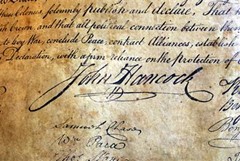 John Hancock is one of the founding fathers of our country. The personal responsibilities he took throughout both his life and the formation of our country make him our choice for this section. He was President of the Continental Congress. There he oversaw the creation of the Declaration of Independence. Hancock was involved with the adoption of the Articles of Confederation. As a military leader, he helped defeat General Burgoyne at Saratoga. John Hancock would oversee the appointment of George Washington as Commander in Chief of the Continental Army. He signed the actual appointment. Yet we seem to know John Hancock for only one thing, his stylish and large signature on the Declaration of Independence. The rumor is that after signing, Hancock stated, “There, John Bull can read my name without spectacles, he may double his reward, and I put his at defiance.” His reference was to King George III. Whether this was the case or not, John Hancock made sure that his signature would not be missed by anyone.
John Hancock is one of the founding fathers of our country. The personal responsibilities he took throughout both his life and the formation of our country make him our choice for this section. He was President of the Continental Congress. There he oversaw the creation of the Declaration of Independence. Hancock was involved with the adoption of the Articles of Confederation. As a military leader, he helped defeat General Burgoyne at Saratoga. John Hancock would oversee the appointment of George Washington as Commander in Chief of the Continental Army. He signed the actual appointment. Yet we seem to know John Hancock for only one thing, his stylish and large signature on the Declaration of Independence. The rumor is that after signing, Hancock stated, “There, John Bull can read my name without spectacles, he may double his reward, and I put his at defiance.” His reference was to King George III. Whether this was the case or not, John Hancock made sure that his signature would not be missed by anyone.
Who was John Hancock really? John Hancock’s father and grandfather were both Congregationalist ministers and graduates of Harvard’s ministerial school. John went to Boston Latin School, the oldest educational institution in the colonies. He graduated in 1750 at 13. Hancock then went to Harvard where he studied Latin, religion, physics, geometry, astronomy, geology, and math. He received a bachelor’s degree in Classical Studies in 1754. After graduating he went to work for his uncle’s firm, the House of Hancock. He became a full partner in 1763 when his uncle’s health began to fail. Thomas Hancock, his uncle, died in August 1764. John inherited the business, the estate and 22,000 acres of land in Massachusetts, Connecticut, and Maine, making him one of the wealthiest men in the colonies.
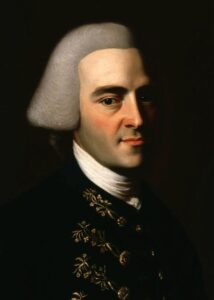 John Hancock became involved in the independence effort in 1765 when he was elected to Boston’s Town Council. Shortly after his election, the Stamp Act was passed by Parliament. The Stamp Act was a tax on all legal and contractual transactions on paper. This also included general paper products such as newspapers and even playing cards. The items had to be stamped with an official seal. It would be the Stamp Act that brought about the rallying cry of “Taxation without Representation.” Colonists believed this was an illegal tax because they were not represented in Parliament. As the now owner of a large shipping firm, John Hancock was particularly affected by the Stamp Act. It brought increased paperwork and heavy taxes.
John Hancock became involved in the independence effort in 1765 when he was elected to Boston’s Town Council. Shortly after his election, the Stamp Act was passed by Parliament. The Stamp Act was a tax on all legal and contractual transactions on paper. This also included general paper products such as newspapers and even playing cards. The items had to be stamped with an official seal. It would be the Stamp Act that brought about the rallying cry of “Taxation without Representation.” Colonists believed this was an illegal tax because they were not represented in Parliament. As the now owner of a large shipping firm, John Hancock was particularly affected by the Stamp Act. It brought increased paperwork and heavy taxes.
At first John Hancock believed the Stamp Act should be obeyed until a formal repeal could take place. After a few months, Hancock changed his mind and joined the resistance. On May 9, 1768, Hancock’s sloop Liberty arrived in Boston with a shipment of Madeira wine. The following day the ship was inspected by customs officials who accused him of smuggling. On June 10, officials seized the Liberty which had already been filled with a new cargo for export from the colonies. Hancock was then sued. He hired John Adams as his attorney. The first suit was filed on June 22, 1768, concluded in August, and resulted in the confiscation of the Liberty. The ship was put into the British customs service. It was burned by angry colonists in Rhode Island the following year. The second suit began in October and accused Hancock of illegally unloading 100 kegs of wine without paying the duty on them. After five months the case was dropped, probably for lack of evidence. John Hancock’s Liberty affair made him a martyr and patriot in the eyes of fellow colonists. From this point, his involvement both financially and personally in the Revolution would speed up.
To put things in perspective, the Declaration of Independence was signed by 56 people. Although John Hancock, the president of the Continental Congress, signed the document on July 4, 1776, most of the delegates added their signatures on Aug. 2, 1776. The last signer added his name on Nov. 4, 1776. Nine of the signers were immigrants, two were brothers and two were cousins. One was an orphan. The average age of a signer was 45. Benjamin Franklin was the oldest delegate at 70. The youngest was Thomas Lynch Jr. of South Carolina at 27.
Eighteen of the signers were merchants or businessmen, 14 were farmers, and four were doctors. Twenty-two were lawyers — although William Hooper of North Carolina was “disbarred” when he spoke out against the king — and nine were judges. Stephen Hopkins had been governor of Rhode Island. Forty-two signers had served in their colonial legislatures. John Witherspoon of New Jersey was the only active clergyman to attend. Almost all were Protestants. Charles Carroll of Maryland was the lone Roman Catholic. Seven of the signers were educated at Harvard, four at Yale, four at William & Mary, and three at Princeton. Witherspoon was the president of Princeton, and George Wythe was a professor at William & Mary. His students included the Declaration’s scribe, Thomas Jefferson.
Seventeen signers fought in the American Revolution. Thomas Nelson was a colonel in the Second Virginia Regiment and then commanded Virginia military forces at the Battle of Yorktown. William Whipple served with the New Hampshire militia and was a commanding officer in the decisive Saratoga campaign. Oliver Wolcott led the Connecticut regiments sent for the defense of New York and commanded a brigade of militia that took part in the defeat of General Burgoyne. Caesar Rodney was a major general in the Delaware militia; John Hancock held the same rank in the Massachusetts militia.
The British captured five signers during the war. Edward Rutledge, Thomas Heyward Jr., and Arthur Middleton were captured at the Battle of Charleston in 1780. George Walton was wounded and captured at the Battle of Savannah. Richard Stockton of New Jersey never recovered from his imprisonment at the hands of British Loyalists. He died in 1781. Florida’s connection during the Revolutionary War was through the Castillo de San Marcos. It had been converted into a prison for three captured signers of the Declaration, Thomas Heyward, Jr., Arthur Middleton, and Edward Rutledge.
Eleven signers had their homes and property destroyed. Francis Lewis’s New York home was razed, and his wife taken prisoner. John Hart’s farm and mills were destroyed when the British invaded New Jersey, he died while fleeing capture. Carter Braxton and Nelson, both of Virginia, lent large sums of their personal fortunes to support the war effort but were never repaid.
John Hancock? Even though he was one of the targets for the British raid on Lexington and Concord, he would avoid capture. From 1780 to 1785, Hancock would become the first governor of the Commonwealth of Massachusetts. He would be reelected in 1787 and serve until his death in 1793.
The 56 men who created our country ended their declaration with these words: “And for the support of this Declaration, with a firm reliance on the protection of divine Providence, we mutually pledge to each other our Lives, our Fortunes and our sacred Honor.” Responsibility is much more than empty words. They held nothing back; not their fortunes, not their honor and not even their lives.
Ideas to Explore
A full-size replica of the Declaration should be passed around. Also consider the craft of making a feather pen. Craft stores like Hobby Lobby carry large feathers. To make a quill pen:
- Use a steel can, cleaned, filled with sand. Heat to 350 degrees in an oven.
- Carefully remove and stand the feathers up in the can. About an inch deep. Let the sand cool for an hour. This will dry out the feather’s tip.
- Using a razor blade, cut the tip of the feather to resemble a fountain pen tip. You should be able to find instructions or a YouTube video on this. Once trimmed, the feather pen tip is split and ready for writing.
- Practice writing, signing signatures on vellum (the original vellum was animal skins). Today we use artificial vellum.
Examples of Historical Personal Responsibility Occurring in Florida
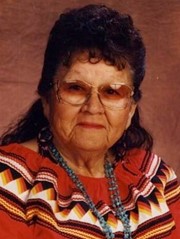 Betty Mae “Potackee” Tiger Jumper (1923-2011) was born in a Seminole camp near Indiantown, Florida. She would become the first and only female chief of the Seminole Tribe of Florida. Betty Mae was a nurse and newspaper editor and was the first Florida Seminole to learn to read and write English. Her first languages were Mikasuki and Creek. In the segregated Florida of her childhood, Seminoles were not permitted to attend white or black schools.
Betty Mae “Potackee” Tiger Jumper (1923-2011) was born in a Seminole camp near Indiantown, Florida. She would become the first and only female chief of the Seminole Tribe of Florida. Betty Mae was a nurse and newspaper editor and was the first Florida Seminole to learn to read and write English. Her first languages were Mikasuki and Creek. In the segregated Florida of her childhood, Seminoles were not permitted to attend white or black schools.
Betty Mae Tiger Jumper grew up in a small village in the Everglades. Her mother was a full-blooded Seminole, and her father was white. With little opportunity for education in the area, Betty Mae attended an Indian boarding school a thousand miles away in Cherokee, North Carolina. In 1945, she and her cousin, who also attended the same school, became the first Florida Seminoles to graduate from high school. She then enrolled in a nursing program at the Kiowa Indian Hospital in Oklahoma. A year later, she returned to Florida and worked to improve health care within the Seminole community. There she married Moses Jumper, whom she had met at the boarding school in North Carolina. They had three children. In addition to her public health career, she launched a tribal newsletter called the Seminole News (which later became The Seminole Tribune) in 1950.
After the Seminole tribe of Florida received federal recognition in 1957, Betty Mae Jumper was elected as one of its representatives. She continued to work in tribal government in various capacities, and in 1967 she was elected head of the Tribal Council, the first woman to serve as leader of the Seminoles. She left office in 1971 and became publisher of the Seminole Tribune newspaper. Betty Mae Jumper also collected stories and legends of the Seminole and has lectured widely about Seminole history and culture. She has not only worked in health care, government, and media positions to improve the fortunes of her people, but she has also sought to preserve Seminole culture and educate others about it.
Ideas to Explore
Visit the Seminole Historical Society located at 7464 Ridge Rd Seminole, FL 33772. Phone: 727-399-0587 Email: info@seminolehistoricalsociety.org Website: http://www.seminolehistoricalsociety.org/
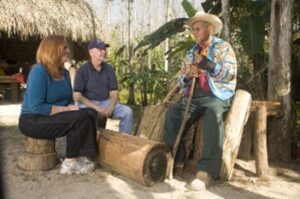 The Seminole Museum is nestled in the heart of the Everglades on the Big Cypress Seminole Indian Reservation, the Ah-Tah-Thi-Ki Museum is home to more than 180,000 unique artifacts and archival items. Come and learn about the Seminole people and experience their rich cultural and historical ties to the Southeast and Florida, as they have made Big Cypress their home since creation.
The Seminole Museum is nestled in the heart of the Everglades on the Big Cypress Seminole Indian Reservation, the Ah-Tah-Thi-Ki Museum is home to more than 180,000 unique artifacts and archival items. Come and learn about the Seminole people and experience their rich cultural and historical ties to the Southeast and Florida, as they have made Big Cypress their home since creation.
Plan a visit to the Big Cypress Seminole Indian Reservation, 34725 West Boundary Road, Clewiston, FL 33440 Phone: 877-902-1113 Email: museum@semtribe.com Website: https://www.semtribe.com/
Practicing Acts of Personal Responsibility
Local mission work is best for this type of practice. Find age-appropriate opportunities to serve those in our community.
- 1NIV New International Version Translations

